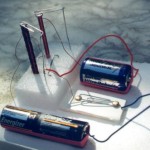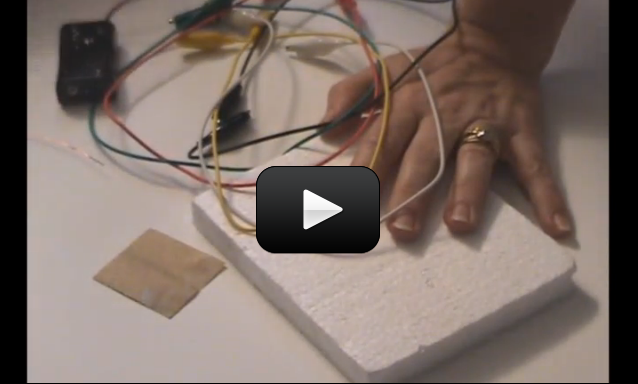 Relays are telegraphs, and they both are basically “electrical switches”. This means you can turn something on and off without touching it – you can use electricity to switch something else on or off!
Relays are telegraphs, and they both are basically “electrical switches”. This means you can turn something on and off without touching it – you can use electricity to switch something else on or off!
We’re going to build our own relay that will attract a strip of metal to make our telegraph ‘click’ each time we energize the coil.
IMPORTANT! This experiment is very tricky to get working right. You’ll want to pair up with someone who’s handy in the workshop and has a keen eye and a feather touch for adjusting the clicker in the final step. Someone who is a patient, fix-it type of person will be able to help you get this project working well.
Note: There are bonus experiment ideas near the bottom once you’ve mastered this activity.
Please login or register to read the rest of this content.


This setup is rather delicate and really only intended to demonstrate how a telegraph and relay function. So, it would be difficult to make this work reliably between two rooms. However, you could use the paperclip and brass fastener to make a button for each room, then run wires into the next room and use a buzzer in each room to make a reliable beep.
Is there a way that I can make it so that me and my friend can converse in Morse code in different rooms?
A lot! The more wire wraps you have, the stronger the magnetic field will be when you apply a voltage. It’s okay for the wire wraps to be dozens of layers thick.
How much wire should we put on the nail?